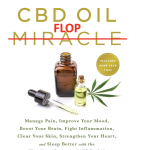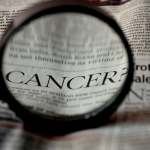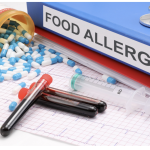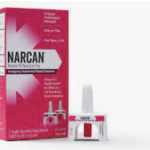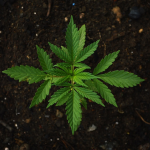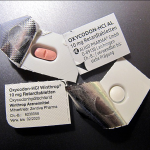For reasons explained below, a legal loophole makes delta-8 THC, a psychotropic isomer of delta-9 (the real stuff), perfectly legal. Kids can (and do) buy it. But there is very little of delta-8. You'd need a hemp farm the size of Jupiter to harvest enough. Enter the chemists. It can be made from CBD, but look out - the reaction is a mess so whatever is being sold as delta-8 is often a complex mixture of chemicals, some of which are unknown. Users should be aware that they are playing "Chemical Russian Roulette."
Drugs & Pharmaceuticals
While I was AWAKE one night "insomniating" (made-up word), a Facebook ad for sleep meds magically appeared. A company called LifeMD was selling three prescription sleep aids via telemedicine. The Facebook ads made the drugs look, well, lights-out great. But upon closer examination, this wasn't exactly true. See if you can stay awake for this article.
Introducing CBD (cannabidiol), the latest fad in the ever-expanding universe of pseudo-medicine! It's the "miracle" cure that's as easy to buy as a candy bar – and about as effective as wishing on a shooting star. Americans, denied effective pain medicine and desperate for relief from their aches and pains, are jumping on the CBD bandwagon faster than you can say "snake oil." But the truth about this so-called remedy is about to hit harder than a reality check at a fantasy convention.
The standard argument for restricting patient access to pain medications is that these drugs frequently lead to addiction. A large body of research contradicts that claim, though it's doubly absurd when directed at people afflicted by terminal (and often very painful) illnesses. They sometimes have only weeks or months to live, yet they're denied pain medicine in the name of fighting opioid dependence. Such absurdity has to stop.
Xolair, an antibody asthma drug, was recently approved for severe food allergic reactions. It is not the first biological drug to treat multiple conditions. But it is the first to treat severe food allergies - a growing problem.
Naloxone and Naltrexone sound alike, look alike chemically, and are both used to counter the misuse of opioids. But pharmacologically, they're strikingly different. This is why the two drugs are used for different purposes. Confused? Let's clear things up.
From vaccines and AI innovations to imminent breakthroughs, discover the cutting-edge advancements shaping the future of healthcare in this conversation with radio host Mark Hahn.
Psychotropic drugs are all the rage now as a potential treatment of brain diseases. Examples are ketamine and psilocybin for depression and PTSD. More recently, a single dose of LSD was found to have a long-lasting effect on generalized anxiety disorder. Some simple chemistry may explain how LSD can persist in the brain long after it is gone from the blood.
Nonalcoholic steatohepatitis (NASH) is a progressive liver disease with no current cure, but a drug called resmetirom may offer a lifeline for millions of patients, promoting a better quality of life and increased longevity.
The FDA has proposed changing the classification of marijuana from a Schedule I to a Schedule III drug. What impacts could this regulatory status change have on public health and drug regulation around the U.S.? Let's listen in.
Do opioids effectively control moderate-to-severe cancer pain? A recent review of the evidence says yes, though the press release for the study says otherwise, its headline declaring that the efficacy of opioids against cancer pain remains "unclear." Both statements can't be true, so which one is false?
There's a vital need for new and effective pain medications. Vertex just announced results from a Phase III study of its experimental drug VX-548. How well does the drug work? It's hard to tell. Here's why.


